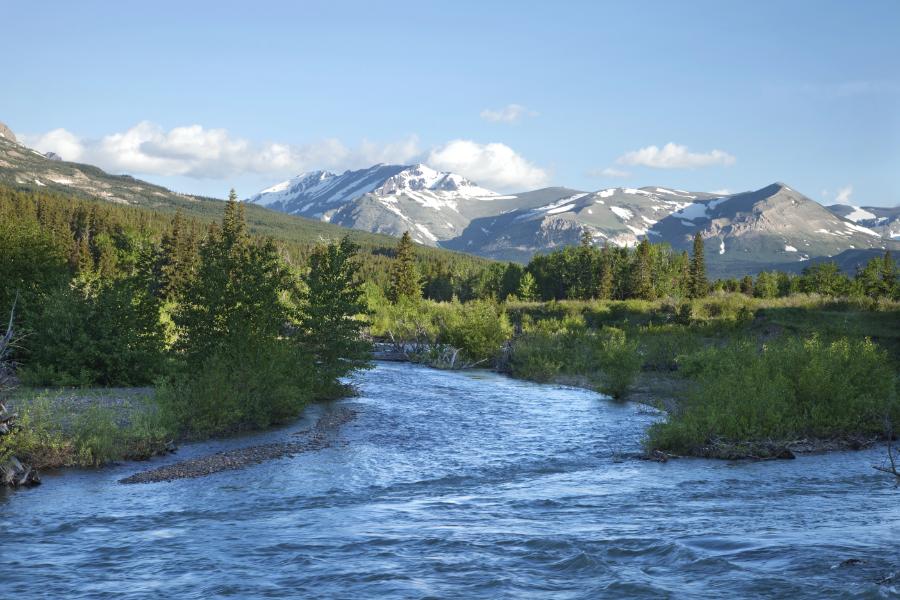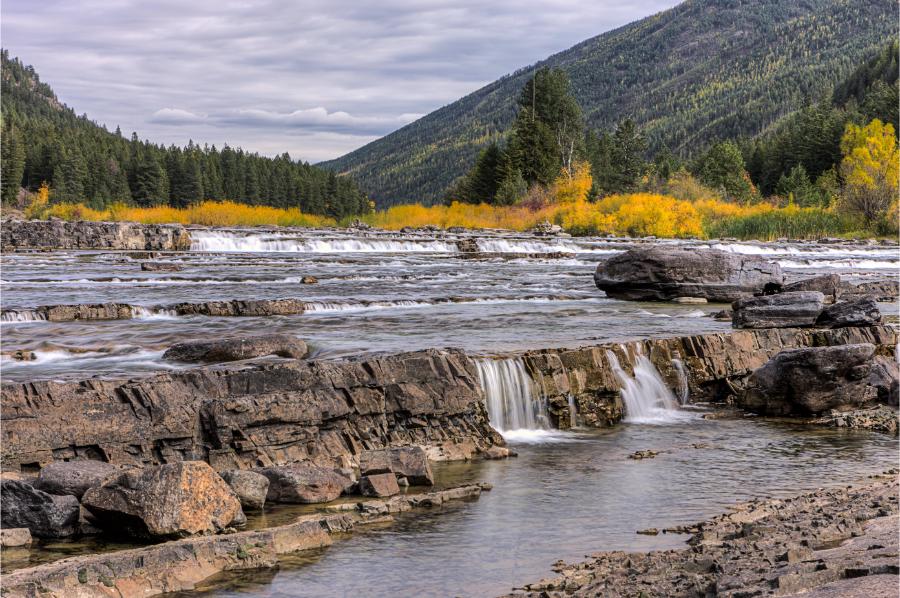
The Flathead River, a stunning waterway nestled in the heart of Montana, is a vital ecological and recreational resource. Originating from the majestic Glacier National Park, this river meanders through diverse landscapes, offering breathtaking views and a rich tapestry of wildlife. As you explore its banks, you’ll find that the river is not just a body of water; it is a lifeline for the surrounding ecosystems and communities.
The Flathead River is renowned for its crystal-clear waters, which are fed by glacial melt and numerous tributaries, creating an environment that supports a variety of fish species, including the prized native cutthroat trout. As you delve deeper into the Flathead River’s significance, you will discover its cultural importance as well. For centuries, it has served as a crucial resource for Indigenous peoples, who relied on its waters for sustenance and transportation.
Today, the river continues to be a focal point for outdoor enthusiasts, drawing anglers, kayakers, and hikers alike. The Flathead River is not only a natural wonder but also a testament to the interconnectedness of nature and human activity. Understanding its flow rate is essential for appreciating its role in the ecosystem and ensuring its preservation for future generations.
Key Takeaways
- The Flathead River is a major river in the northwestern United States, flowing through Montana and British Columbia.
- Factors affecting flow rate in the Flathead River include precipitation, snowmelt, and human activities such as dam operations and water withdrawals.
- Historical flow rate data for the Flathead River provides valuable insights into long-term trends and variability in river flow.
- Current flow rate measurements are essential for understanding the river’s current conditions and making informed water management decisions.
- Flow rate has a significant impact on the environment, affecting aquatic habitats, water quality, and the overall health of the river ecosystem. Managing flow rate is crucial for both conservation and recreational activities along the river.
Factors Affecting Flow Rate
The flow rate of the Flathead River is influenced by a myriad of factors that can change with the seasons and weather patterns. One of the most significant contributors to flow rate is precipitation. Rainfall and snowmelt play crucial roles in determining how much water enters the river system.
During spring, as temperatures rise, snow in the surrounding mountains begins to melt, leading to increased water levels in the river. Conversely, during dry summer months, you may notice a decrease in flow as evaporation rates rise and precipitation becomes scarce. Another critical factor affecting the flow rate is human activity.
Water management practices, such as dam operations and irrigation withdrawals, can significantly alter the natural flow of the river. For instance, if water is diverted for agricultural purposes or if a dam releases water for hydroelectric power generation, you may observe fluctuations in the river’s flow rate. These human interventions can have both positive and negative consequences on the river’s health and its surrounding ecosystems.
Historical Flow Rate Data

To truly understand the dynamics of the Flathead River’s flow rate, it is essential to examine historical data. Over the years, researchers have collected extensive records that reveal patterns and trends in the river’s flow. By analyzing this data, you can gain insights into how climate change and human activities have impacted the river over time.
For example, historical records may show that average flow rates have decreased during certain periods due to prolonged droughts or increased water extraction for agricultural use. Moreover, historical data can provide context for current conditions. By comparing past flow rates with present measurements, you can identify shifts that may indicate broader environmental changes.
This information is invaluable for scientists and conservationists who are working to protect the river’s ecosystem. Understanding these historical trends allows you to appreciate the delicate balance that exists within the Flathead River system and underscores the importance of sustainable management practices.
Current Flow Rate Measurements
In recent years, monitoring efforts have intensified to provide real-time data on the Flathead River’s flow rate. Various agencies and organizations utilize advanced technology to measure water levels and flow rates at multiple points along the river. These measurements are crucial for understanding current conditions and making informed decisions regarding water management.
As you explore this data, you may find that flow rates can vary significantly depending on location and time of year. Current measurements reveal not only the immediate state of the river but also help predict future conditions. For instance, if current flow rates are significantly lower than historical averages, it may signal potential drought conditions or increased water demand from nearby communities.
By staying informed about these measurements, you can better appreciate the challenges facing the Flathead River and advocate for responsible stewardship of this precious resource.
Impact of Flow Rate on the Environment
The flow rate of the Flathead River has profound implications for its surrounding environment. A healthy flow rate supports diverse aquatic habitats, ensuring that fish populations thrive and that other wildlife can access necessary resources. When flow rates are too low, it can lead to habitat degradation, affecting not only fish but also birds and mammals that rely on the river for food and shelter.
Conversely, excessively high flow rates can result in erosion and sedimentation, disrupting delicate ecosystems.
Higher flows often lead to cooler water temperatures, which are beneficial for many fish species during warmer months.
Understanding these environmental impacts emphasizes the need for careful monitoring and management of the Flathead River’s flow rate to maintain its ecological integrity.
Managing Flow Rate for Conservation and Recreation

Collaborative Approach to Flow Management
One approach to managing flow rates involves collaboration among various stakeholders, including government agencies, conservation organizations, and local communities. By working together, these groups can develop strategies that prioritize both ecological health and recreational access. For instance, implementing seasonal flow adjustments can help maintain optimal conditions for fish spawning while still allowing for recreational use during peak seasons.
Understanding the Flathead River’s Flow Rate
Understanding the Flathead River’s flow rate is crucial for appreciating its ecological significance and ensuring its sustainability for future generations. By examining factors affecting flow rate, historical data trends, current measurements, environmental impacts, and management strategies, you can gain a comprehensive understanding of this vital resource.
Preserving the Flathead River for Future Generations
As you engage with this beautiful river, remember that your actions can contribute to its preservation and enjoyment for years to come. By adopting sustainable management practices and supporting collaborative efforts, you can help ensure that the Flathead River remains a thriving ecosystem and a beloved destination for outdoor enthusiasts.
FAQs
What is the Flathead River?
The Flathead River is a major river in the northwestern United States, flowing through the state of Montana and eventually joining the Clark Fork River.
What is flow rate?
Flow rate is the measurement of the volume of water that passes through a specific point in a river over a certain period of time, typically measured in cubic feet per second (cfs).
What is the flow rate of the Flathead River?
The flow rate of the Flathead River varies throughout the year and is influenced by factors such as snowmelt, precipitation, and dam releases. The average flow rate can range from around 2,000 to 20,000 cubic feet per second.
Why is the flow rate of the Flathead River important?
The flow rate of the Flathead River is important for various reasons, including water resource management, hydroelectric power generation, recreational activities such as fishing and rafting, and ecological health of the river and its surrounding ecosystem.
Where can I find current flow rate information for the Flathead River?
Current flow rate information for the Flathead River can be obtained from various sources, including the United States Geological Survey (USGS) website, local water management agencies, and river outfitters.
